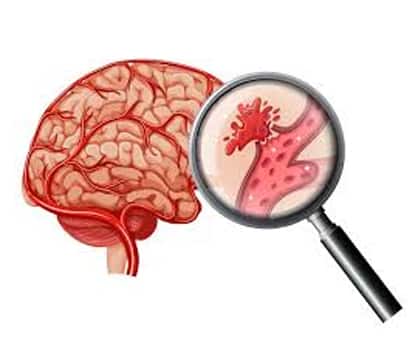Leading Vascular Clinic with Well-Equipped Laboratory
Cerebral Bleed/Hemorrhage is the bleeding inside the skull. In Other Words, the bleeding that occurs within or around the brain is called Cerebral bleeding. It is also referred to as a brain bleed or intracranial hemorrhage. Enclosed inside of the skull, if there is any leaking blood in the brain, it can be subjected to compression and cause damage to the parts of the brain.

Cerebral Bleed/Hemorrhage may occur due to external or internal causes which may lead to brain damage or even life-threatening. Bleeding caused by leaking or a burst of a blood vessel in the brain is called a hemorrhagic stroke. This may occur due to external or internal causes which may lead to brain damage or even life-threatening. Bleeding caused by leaking or a burst of a blood vessel in the brain is called a hemorrhagic stroke. This may occur due to external or internal causes which may lead to brain damage or even life-threatening. Bleeding caused by leaking or a burst of a blood vessel in the brain is called a hemorrhagic stroke.
Cerebral Bleed/Hemorrhage is a life-threatening cause due to internal or external bleeding. After completion of a complete diagnostic study, our Vascular specialists give the treatment accordingly
- Sudden headache
- Trouble swallowing
- Issues with vision
- Loss of coordination
- Confusion / Trouble understanding
- Difficulty talking
- Unexplained unconsciousness & seizures
- Paralysis
- Sleepiness or Coma
Our Surgeons give the best treatment once after the completion of diagnostic tests like CT scan, MRI Scan, evaluating physical symptoms, complete vascular study. Surgery might be required to treat the brain hemorrhages in severe conditions and sometimes to relieve the pressure off the brain. Hemorrhage due to a burst cerebral aneurysm has to be treated by clipping of the artery through a surgical process, in which part of the skull needs to be removed in a procedure is called a craniotomy. Anti-anxiety drugs, anti-epileptic drugs, and other medications are administered to the patients to control symptoms such as severe headaches.
Since the treatment might require complicated surgery or might be treated with drugs, the recovery time is based on the severity of the patient’s condition and the medical procedure they undergo.
Q. What is Cerebral Bleeding?
A.A type of stroke where a damaged blood vessel leaks blood into the brain. There are two kinds of hemorrhagic strokes: They are Intracerebral Hemorrhage and Subarachnoid Hemorrhage. Intracerebral Hemorrhage occurs when the blood leaks into the brain tissue. Subarachnoid Hemorrhage occurs when the blood leaks around the brain tissue like aneurysm rupture.
Q. Is hemorrhagic stroke an emergency?
A. Yes, it carries a high risk of death.
Q. What is the treatment?
A. Treatment depends upon the kind cause of hemorrhage and the clinical condition of the patient. However, the first step in the treatment is to make the patient stabilize, by controlling the blood pressure and brain swelling. Time is of the essence in the management of hemorrhagic stroke. Treatment should not be delayed for any reason, because it may result in death.
Q. What are the risk factors for hemorrhagic stroke?
A. Hypertension is the most common risk factor for hemorrhagic stroke.
Q. Is recovery possible?
A. Yes, recovery is possible but, it depends upon the hemorrhage and the quality of care the patient has received.
Q. Can we give aspirin to the patient, like in a heart attack?
A. No, aspirin is a blood thinner and can cause complications in a patient with hemorrhagic stroke.
